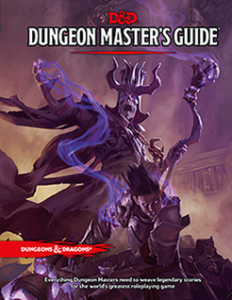 Boxed text is used to provide an initial description of an encounter to the DM and players, with the intention that the DM read or paraphrase the information to the players.
Boxed text is used to provide an initial description of an encounter to the DM and players, with the intention that the DM read or paraphrase the information to the players.
It has the following benefits:
- It alerts the DM and players to what’s important in the room.
- It conveys the author’s intention for the initial stages of the encounter.
- It can set a mood.
- It reduces prep time for the DM, as they don’t have to read the entire encounter and synthesise the elements into a room description.
It has the following problems:
- It assumes that the inhabitants or contents of the room haven’t changed in response to previous actions by the characters.
- It doesn’t adapt well to multiple approaches or situations.
Those problems assume the text is well written. When it isn’t well written, these issues often arise:
- It’s too long.
- It has too much irrelevant detail.
- It doesn’t have enough relevant detail.
- It assumes actions on the part of the characters.
- The players stop listening and miss stuff.
Even when it’s well written, the DM might deliver it poorly. And,
- The players stop listening and miss stuff.
Disengaged players aren’t good. The general advice I hear about boxed text is that it should be short. Two paragraphs? It’s probably too long!
One time that isn’t the case is when the designer uses it so an NPC can speak. Still, in this case, you don’t want it to go too long, but having two paragraphs of an NPC talking gives the DM an idea of their voice and can convey initial information to the players. After that, I’d use dot points for the rest of the conversation, with the DM using them as a guide for the conversation with the players. The boxed set sets up the scene, but from there it’s up to the group.
All of this is a subset of the greater debate on how to present encounters. I’ve been struggling with the Season 8 D&D Adventurers League adventures of late, which use no boxed text, but also have a very structured approach to providing information… which unfortunately often has all the information in the wrong places and scattered across the page.
Honestly, the answer on whether you use boxed text or not is: It depends. For some encounters, it makes a lot of sense and makes the DM’s job easier. For other encounters, it’s just cluttering up space that the DM can handle themselves. My general rule of thumb is that if you’ve got a room with only a couple of interesting features, such as some orcs training with a dummy hanging from the ceiling, you can probably ignore the boxed text unless there’s an action on the part of the orcs you want to describe. If the dummy swings back and knocks an orc off-balance, it’s likely easier to put that into some short, boxed text rather than try to describe it to the DM in general text.
Once the situation gets more complicated (and especially if some features are hidden from the players at the start), I prefer to use boxed text. The next section describes the hidden details to the DM and gives an idea of how it might be run. That section? Tremendously important!
Taken another way, consider including these sections when writing an adventure for others:
- A description of what the characters can initially perceive when they enter the room
- A description of what occurs in the room – the “Play” of the room, which includes stuff not immediately apparent to the characters
- Fuller descriptions of elements of the room – whether NPCs, traps, features or monsters.
It doesn’t have to be boxed text, but the encounter needs to be made easy for the DM to read and run!

Completely agree on all points. What published adventure, in your opinion, nailed the boxed text formatting correctly?